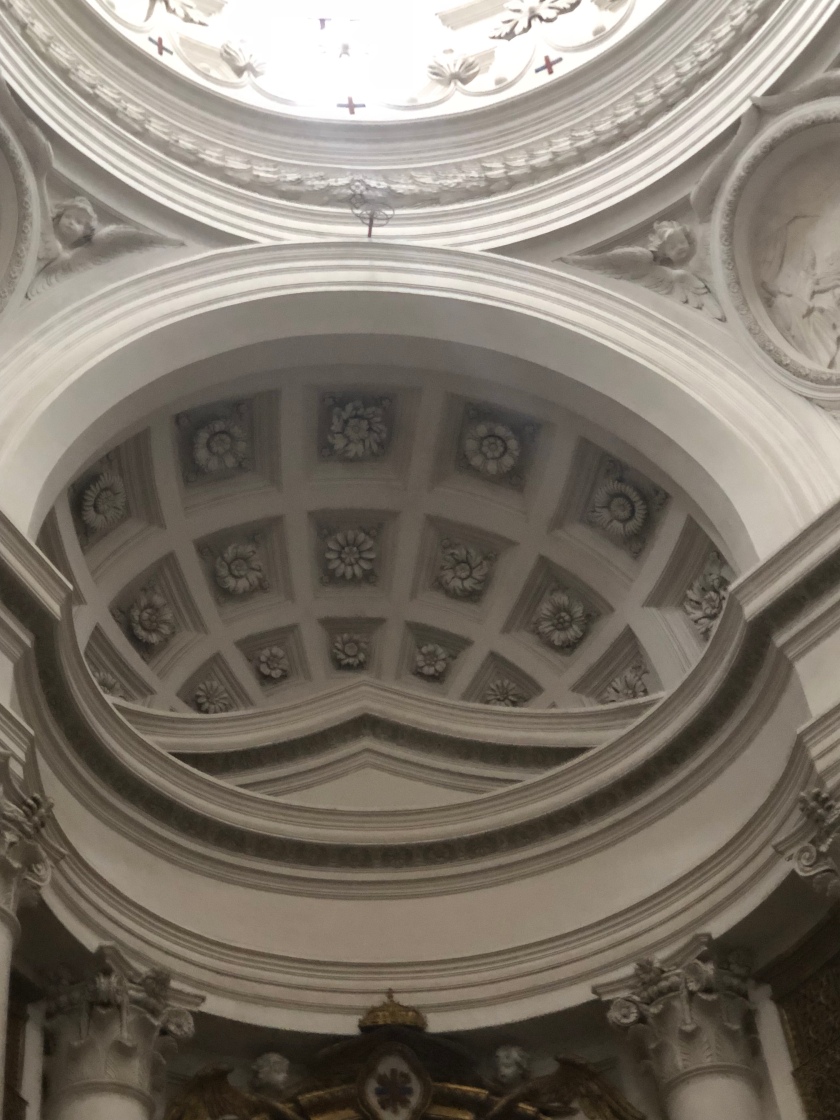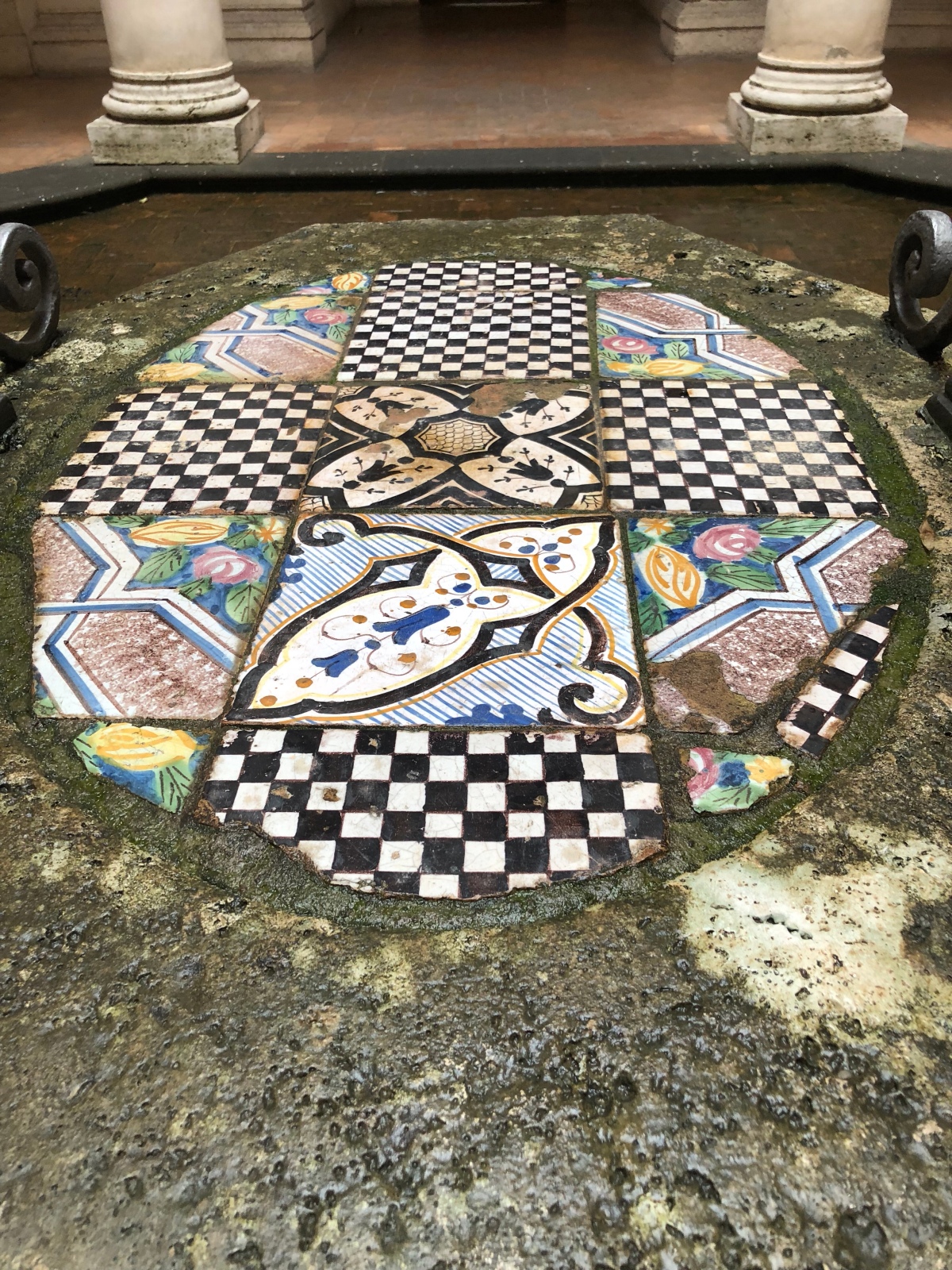San Carlo alle Quattro Fontane, created by Francesco Borromini, was one of his first independent commissions. What interested me about this church was the simplicity and interesting use of geometry for this Baroque style architecture building. This 17th century church was built and then finished towards the end of Borromini’s life. The name Bourque means large and irregularly shaped pearl and many people during this time didn’t enjoy the style. However, this did not stop the artist from making these extraordinary buildings.

The ceiling in the church captured my attention the most. I liked the idea of him using an oval church ceiling, along with the geometric shapes. The positioning of the shapes creates a type of illusion when looking up at the ceiling and gives the effect that the ceiling is much larger and appears to almost move when you stare at it for a short period of time.


There is very little use of bright colors in this church, it is a very basic and simple church with layers of different geometric shapes. There is almost no use of gold in this church compared to other medieval churches that we saw on our church walks. Yet, I did see a few familiar symbols from other churches, like flowers for fertility. This church seemed more simplistic like churches that I would see in the United States. I think the simplicity made it appear intimate and humble and feel more relatable to the common people, rather than the rich, because of the lack of gold.


This church created a good combination of complex and simple design and was a nice break from the intricate and elaborate churches filled to the brim with decorations and gold. I felt it was a good example, which showed how thoughts and ideas evolved, especially in the church setting.

I like your description of the visual characteristics and the details of the church. I also see the repeated fertility forms repeated from Greek and Roman art throughout most of the spaces throughout Rome. Nice post.
LikeLike